Inspirations from the Distance Learning Program (DLP), Part II
by Marc Delannoy
The first year for the Distance Learning Program focuses on the path of Christian Discipleship through the practices of devotional bible reading, prayer and meditation. The content of the learning focuses on a recovery of our religious life - our very ability to pray - by developing a living sense for the divinity through our humanity. Classes are held once a week on Tuesday evenings for 1 and 1/2 hours and are supported by private meetings with the directors and small group discussions. Artwork and the creation of prayers are a part of the course and some examples are shared in this post.
What was I thinking as I took up this program? The curriculum did state that it would be “transformational” learning. Still, how could this take place? What I found – after the first flush of meeting new people, seeing some familiar faces and getting used to the technology – was a question. It felt new, although it was not. It was asked in northern Galilee by Jesus some 2000 years ago: “Who do you say I am?”
I do not quite understand why this question surprised me so, but it did. It has to do with the fact that the nature of Christ affects us deeply on many levels, private and public. And it was intense enough that I was grateful to have more time to spend on it when, through personal circumstances, I had to take a leave from work.
I have struggled to find a way of understanding the way the Distance Learning work has affected me. It might sound terse to state that the Tuesday night sessions are, for me, part psychological group therapy, part theological learning. In her comments to the visions she received, the Swiss visionary Joa Bolendas, states: “The task of the psychologist is to restore trust in life, and the task of the theologian is to restore relationship to the source of life.”* She saw psychology and theology working together for the healing of modern humanity in its ongoing crisis of meaning. I have come to see how something of these necessary restorations – of trust in life and of relationship to the source of life – are present in the expressly spiritually scientific approach to the question of discipleship through the Distance Learning Program, asking the ever-new question: “Who do YOU say that I AM?”
*Joa Bolendas, Alive in God’s World, p. 39, Lindisfarne Books.
About the Author: Hailing from Winnipeg, Manitoba, Marc is a father of four, now living in Ottawa, Ontario for the past twenty or so years and mainly pursuing Waldorf teaching in a French public Waldorf School as a kindergarten and music teacher. Living abroad for four years in the recent past, Marc asked himself the following question: "Where do I find substance for my life?" The answer to this has led him to the footsteps of the Seminary in Toronto.
This is a blog entry by a student at The Seminary of the Christian Community in North America. These are posted weekly by the student editorial team of Robert Bower, Shannon Young and Faith DiVecchio. For more information about our seminary, see the rest of our website, and for even more weekly podcast and video content check out the seminary patreon page.
The views expressed in this blog entry do not necessarily represent the views of the Seminary, its directors or the Christian Community. They are the sole responsibility of its author.





